Netflix's streaming service offers countless true-crime documentaries and docuseries, and thanks to the Netflix original Mindhunter, serial killers from the past came to life again in this show about the formation of the FBI's Behavioral Science Unit. Anyone who has watched Criminal Minds knows about these agents, as that show is based on the organization Mindhunter introduces. Mindhunter focuses on FBI agents Holden Ford and Bill Tench as well as Dr. Wendy Carr as they interview many of America's most famous serial killers in the hopes of gaining some insight into their methodology to help catch similar criminals before the body count continues to grow.
The serial killers in Mindhunter featured fictionalized versions of some of the most notorious killers in American history. These people and their crimes are as repulsive as they are fascinating. Although many fans were holding out hope for a season 3, David Fincher announced in 2023 that Mindhunter season 3 would not happen because of financial concerns. The surprising cessation of the fantastic series means that many of America's most intriguing and famous serial murderers were never featured and a few serial killers in Mindhunter never got the chance to be examined in this format.
The Most Interesting Serial Killers On Mindhunter
William Pierce Jr.

William Pierce Jr. was introduced in Mindhunter season 2, and his case is interesting because, while he was originally in jail for a number of crimes like arson and burglary, it wasn't until after he was paroled from prison that he committed the nine murders he was tried and subsequently convicted for. Pierce's case is interesting for Mindhunter lore due to the unique character of "Junior" and his attempts to outwit the highly trained agents with his own poorly developed but wholeheartedly believed series of lies.
The show digitally placed actor Michael Filipowich's face over the real Pierce's head and used that actual photo to make it look like the Mindhunter serial killer.
There is an image of this serial killer in Mindhunter that the FBI agents took of Pierce, as he was surrounded by junk food. That is a recreation of a real-life photo taken of Pierce at the Appling County Jail in Georgia. The show digitally placed actor Michael Filipowich's face over the real Pierce's head and used that actual photo to make it look like the Mindhunter serial killer.

Related
15 Best Shows Like Mindhunter
The best shows like Mindhunter typically center on true crimes and murderers, and should intrigue fans of the David Fincher Netflix series.
William Henry Hance

William Henry Hance was another Mindhunter serial killer who thought he was smarter than law enforcement, though his low IQ was quickly demonstrated by Agents Holden and Barney during their interview. Convicted of murdering three women but suspected of four, Hance was a former soldier who killed around his army base and sent incriminating letters to the police from a made-up organization threatening to kill women (his victims) in protest of their inability to capture another serial killer known as the Stocking Strangler.
This is a case where the interview with the serial killers on Mindhunter was corroborated by the real story of Hance. He claimed his innocence up to the day his death sentence was carried out 20 years later, and his statements made in his interviews on Mindhunter line up with everything he said in real life up until the Supreme Court rejected his appeal.
Paul Bateson

Paul Bateson appeared in season 2 of Mindhunter, and while he was only charged with the murder of an entertainment reporter for Variety, he is often considered a serial killer on Mindhunter. This is due to the belief that he was also responsible for a series of murders in Manhattan that he was never charged with, leading to his eventual parole for time served, after which he disappeared. Bateson not only briefly appeared in 1973's The Exorcist, but he was also the inspiration for director William Friedkin's 1980 film Cruising.
Bateson's case in real life was just like it was shown in Mindhunter. While he was technically never considered a serial killer in real life, the show brought up all the other unsolved murders that authorities wanted to link him with, but they never could. In Mindhunter, the agents asked him how he could kill a person, and he refused to answer, ending the interview and still claiming his innocence of any other murders.
Herbert Mullin
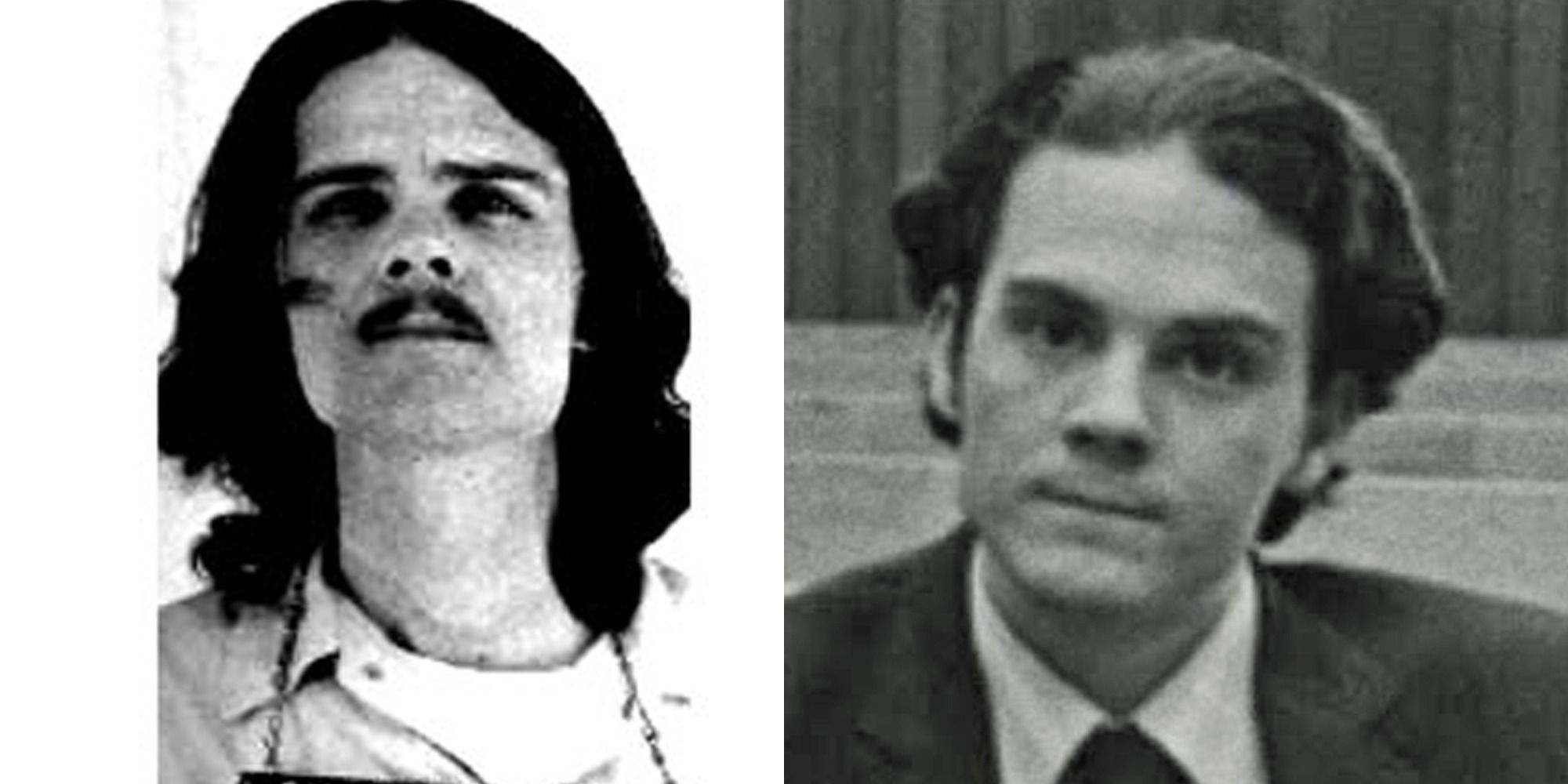
While Herbert Mullin's case was one of the earliest serial killers mentioned by Agent Ford when the idea to begin visiting inmates for their study first comes up in the series, the team doesn't end up ultimately visiting the convicted killer. That happens a handful of times in the series as there are initially a select few that the agents set out to interview, increasing the number of incarcerated killers they speak with as the series progresses.
Mullin violently murdered 13 people of various ages over a short spree in the early seventies that was spurred on by voices in his head that warned him of a catastrophic earthquake that could only be avoided with human sacrifices. He was thankfully captured shortly after his final murder and remains incarcerated today. He was never interviewed as one of the serial killers on Mindhunter.
The Boston Strangler

Albert DeSalvo (AKA The Boston Strangler) was another serial killer who was only mentioned on Mindhunter. The case actually isn't mentioned in conjunction with the interviews being conducted by Ford and Tench either, but at a party with Tench's neighbors when they talk about his work. It's likely it gets a mention because, at the time, the Boston Strangler was one of the best known serial killers thanks to a lot of media coverage.
The case of the horrific strangulation murders that occurred in Boston during the early sixties is much more interesting than the brief nod it received. While DeSalvo confessed to the crimes attributed to The Boston Strangler, there is some doubt that he was responsible for all of the murders. DeSalvo's suspicious death in prison prior to an interview with his lawyer further adds to the lasting interest. As mentioned, in the Mindhunter serial killers, his name and crimes were only mentioned, and they line up with his real case closely.
Monte Ralph Rissell
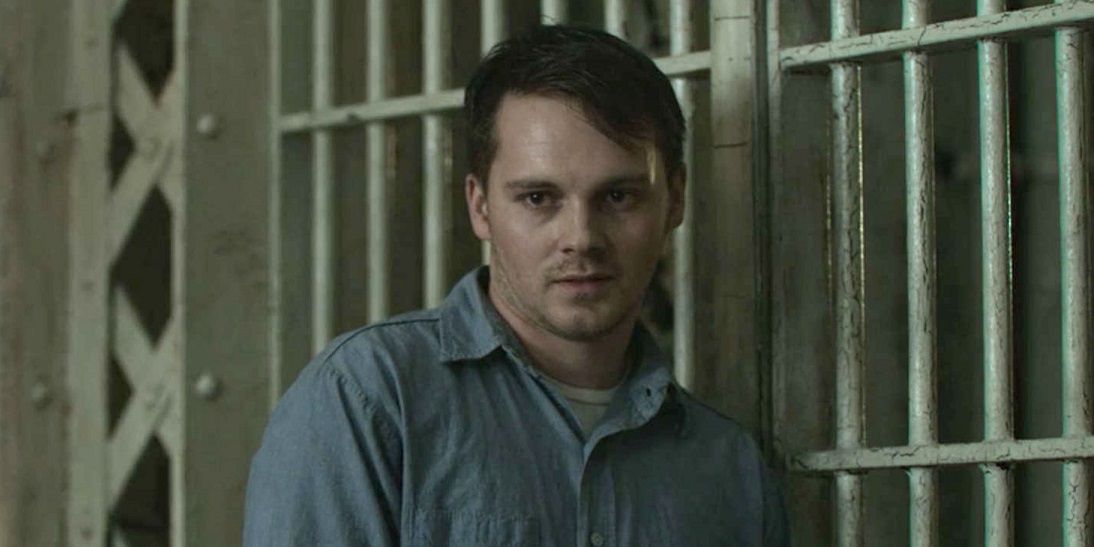
When it comes to American serial killers, there are a lot of big names whose crimes, or at least whose name, will be familiar to even the average Joe. But some of the more interesting cases that are covered in the Netflix series Mindhunter are the cases of serial killers that most people probably haven't ever heard of.
Within the span of less than a year he killed five women and assaulted twelve, and what's even more astonishing and horrifying is that he committed all of these crimes and was convicted of them by the time he was eighteen years old.
One of their lesser-known but just as disturbing cases is that of Monte Rissell. Within the span of less than a year he killed five women and assaulted twelve, and what's even more astonishing and horrifying is that he committed all of these crimes and was convicted of them by the time he was eighteen years old.
This is one of the cases where the Mindhunter serial killers might not line up with what happened in real life. That is because very little is known about Rissell outside a Washington Post article written about him in 1997. This makes most of this serial killer in Mindhunter something that the writers had to piece together from outside of the normal public discourse.

Related
Mindhunter: Every Clue Holden Ford Is A Psychopath
Several theories circling Mindhunter posits Holden Ford as a part of the psychopathic spectrum. Is Holden's behavior a product of nature or nurture?
Elmer Wayne Henley Jr.

Elmer Wayne Henley Jr. is definitely a weird case, even in comparison to other serial killers. What makes Henley bizarre is that he wasn't a natural-born killer. He actually coincidentally met up with an active serial killer who started using Henley to recruit other victims, and eventually, Henley started participating in the murders himself. There are many different types of murderers that are portrayed throughout the course of Mindhunter's two seasons, but it's rare to find a serial killer who is introduced to the crimes by another person.
As his scene in Mindhunter showed, this serial killer was found guilty of several murders in the "Houston Mass Murders." However, while he was found guilty of dozens of murders, he said in his Mindhunter interview that the only man he killed was Dean A. Corll, who he claimed was the real serial killer, and he did it to escape from him and save other kids from death.
Tex Watson

It's certainly not a reality that most people would like to face, but the fact that people like Elmer Wayne Henley Jr. or Charles "Tex" Watson actually existed makes it seem like most people are more capable of brutal, repeated acts of violence than anyone would like to admit.
Tex was one of the members of Charles Manson's "Manson Family" and he was really the lead actor in the famous Manson murders. Watson committed some of the most atrocious killings in American history, and it would appear that he did them simply because Charles Manson told him to, which is dramatized for Mindhunter but is frighteningly true too.
When it came to the Mindhunter serial killers, Tex Watson was the easiest to open up. On the show, he found religion in prison and explained exactly how Charles Manson had manipulated his followers into killing people for him. This was also true to life, as he found Christianity in 1975 and became an ordained minister in 1981 while serving his life sentence.
Charles Manson

Within the fictionalized world of Mindhunter, an in-person interview with Charles Manson is the dream of agent Holden Ford and, by extension, the entire Behavioral Sciences Unit of the FBI. And it's easy to see why.
While Charles Manson is a liar and the information that he gives to Holden and Tench during their interview seems all but useless, Manson also "achieved" something that most people wouldn't think was possible. He actually convinced multiple people to commit murder on his behalf, and he didn't even have to be there to ensure that his commands were followed, the people around him were just that devoted to his will.
Out of all the serial killers on Mindhunter, Charles Manson is the one that people already knew the most about. In real life and on the show, Manson was not a serial killer but was a man who had the ability to influence others to kill for him. That might be why the Mindhunter story was a lot more condensed when it came to Manson's interview, and all it really added was that Manson just found people who were best suited to become murderers and didn't really create his own serial killers.
David Berkowitz

As far as violent and gruesome acts go, David Berkowitz, better known as the Son of Sam, is actually one of the less violent and pathological offenders that Holden and Tench interview for their studies.
Berkowitz terrorized New York with a shooting spree that paralyzed the city with fear, and when he was caught he came up with an absurd story about a possessed dog that told him to commit the murders. However, he still admitted his guilt and accepted a guilty plea instead of pleading insanity. And of course, he eventually confessed that his entire story about his mental illness was completely fabricated.
Mostly, when it comes to the serial killers in Mindhunter, the Netflix series got the story of David Berkowitz correct. In real life, Berkowitz also admitted that his dog story was fake when talking to John Douglas, the real-life counterpart to Ford. Also, the legal battle between Berkowitz and his attorney in Mindhunter was real, a reference to the Son of Sam legislation that doesn't allow criminals to profit off their crimes. With that said, the show connecting Berkowitz with helping out with the B.T.K. cast was fictional for Mindhunter.
Jerry Brudos

Serial killer Jerry Brudos stands out on Mindhunter as one of the most interesting interviews. Unlike some of the other serial killers in the series, Brudos refuses to admit any guilt, only willing to talk to Ford and Tench as long as they speak to him in hypotheticals. He's more than willing to talk about his shoe fetish or why a killer might keep body parts, but only if he never has to admit he's telling his own story. He's also one of the most uniquely repulsive. And that is pretty much in line with the real-life Jerry Brudos.
Brudos' predilections and preferences when it came to his victims are pretty accurately portrayed within Mindhunter, and his crimes were especially unsettling for a few reasons. Obviously, the things that he did were awful, but he was convicted of only a few murders, whereas his personal collection of disturbing photographs included pictures of many women who remained unidentified and whom he was never convicted of killing.

Related
9 True Crime TV Shows & Movies That Were Perfectly Cast, According To Reddit
It can be a huge task to take on the role of a serial murderer, victim, or criminal, but Redditors think these actors did the best job of them all.
Richard Speck

One of the main distinctions that the Behavioral Science Unit comes up with in Mindhunter to distinguish between types of killers is the difference between organized and disorganized killers. And it would seem that mass murderer Richard Speck would be an example of disorganized, impulsive killing.
While it takes most serial killers a while to rack up a body count, the eight murders that Richard Speck was convicted of were all committed in one night. And if Speck is to be believed, he wasn't even planning on committing the crimes, he broke into a dormitory on a random night and then murdered eight out of the nine women inside one by one.
"I t just wasn't their night ".
The interview with this serial killer on Mindhunter was accurate, as it relied on an actual recording of Speck when he was talking to fellow inmates later in his life in prison. He said that he killed the women because "it just wasn't their night," and this was an exact quote from the Mindhunter serial killer, word for word.
Wayne Williams

Unfortunately, the thing that makes the case of Wayne Bertram Williams one of the most interesting cases covered in Mindhunter is also what makes it the most tragic. Although Wayne Williams is the prime suspect in almost two dozen child murders, he has never been convicted of them. Wayne Williams is currently serving life in prison for two murders that he actually was convicted of (and those particular victims were two adult men), and although he is suspected of murdering anywhere between 23 and 30 children in Atlanta, he has essentially gotten away with it.
The story of this serial killer in Mindhunter is pretty close to accurate. In this show, Williams was the main villain in the second season, and they never could link him with the murders of the children because of a lack of evidence. However, the series also had the agents question if Williams killed all the kids, and if he didn't, then there could be another serial killer who got away with it as well. In real life, the case was reopened in 2019, but it remains unsolved.

Related
Atlanta Child Murders True Story Explained: Everything Mindhunter Season 2 Left Out
Netflix dedicated most of season 2 of Mindhunter to the Atlanta child murders case, but how much of the gruesome story was actually true?
Dennis Rader

The inclusion of Dennis Rader, better known as the B.T.K. killer, in Mindhunter is one of the most curious decisions made by the show's writers. While Rader was actively committing murders around this time, he wasn't actually caught and convicted of anything until many years later.
The FBI did everything they could to find him, and it's true that he did tease and taunt the media as well as law enforcement. But his insatiable need to feel like he was outsmarting everyone who was searching for him didn't actually catch up to him until 2005 when he was finally caught as a result of resuming his contact with the police and media in 2004.
When it comes to the serial killers in Mindhunter, the B.T.K. killer was likely added to show the one that the FBI couldn't catch and the reason the BSU needed to keep getting better. His murders and taunting of the FBI made it necessary to interview serial killers, but even if Mindhunter season 3 had arrived, he wouldn't have been arrested as both Tench and Ford would have been retired by 2005.
Edmund Kemper

Mindhunter has done a great job of examining and including a lot of terrifying real-life murderers in its storylines, but clearly, the star serial killer on Mindhunter is Edmund Kemper. Ed Kemper is an interesting character in his own right, and it seems that the Kemper that fans see on the show is a pretty close match to the real-life serial killer. Most of the people who interacted with him said that he was a very intelligent, polite, honest, and open individual who didn't seem to square up with all the horrific crimes that he had committed.
Everything said in his interview on the show was accurate in telling the true story of this serial killer.
In Mindhunter, Kemper is the first serial killer that Special Agent Holden interviews and his interview is actually re-created from the original recordings of interviews with the real man. Everything said in his interview on the show was accurate in telling the true story of this serial killer.
Who They Should Have Had On The Show
Ted Bundy
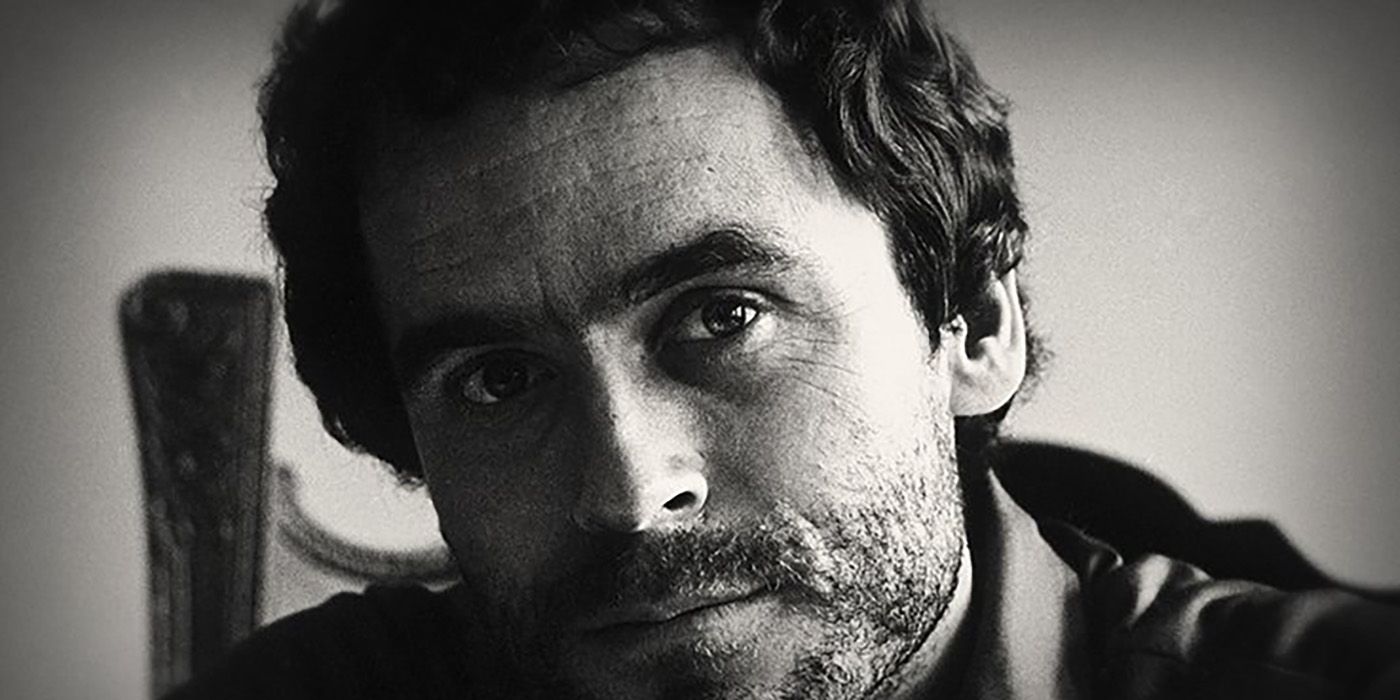
At one point Ted Bundy was having a bit of a moment on Netflix, with their docuseries Conversations with a Killer: The Ted Bundy Tapes and their dramatized movie Extremely Wicked; Shockingly Evil and Vile both coming out in 2019. But surprisingly, the ultra-famous serial killer never made it onto Mindhunter. Although the show was smart to cover killers who don't get as much media attention, it's a shame that the series didn't last long enough to feature the incredibly talkative murderer.
Bundy is a terrifying idea of a serial killer for the audience because he would pretend to be injured, playing on a woman's sympathy, and then abduct her when he lured her to his car. Bundy has fascinated psychologists and the public because of how prolific he was, how well his ruse worked, and because he escaped custody multiple times. He was known to have assaulted and killed 20 people, but he confessed to the killings of 10 more, and his involvement is suspected in more than 30 other deaths.
John Wayne Gacy

Most horror fans would like to believe that killer clowns are just a fantasy designed to make horror movies more interesting, but John Wayne Gacy was a real-life clown who murdered over 30 people. More specifically, he assaulted and killed mostly teenage boys or men in their young 20s, and he managed to commit all of these horrific acts over only six years. And if that isn't enough nightmare fuel, he would often offer to show his victims a "magic trick" and then handcuff them so they couldn't escape.
It's possible that if Mindhunter had continued beyond its second season, Gacy could have been featured. His picture is seen at one point in the show when Holden and Tench are trying to decide on the killers they are going to interview. That means he was already a possible interview subject, but the show didn't get to his story.
Angelo Buono Jr. & Kenneth Bianchi

It's not entirely unheard of for a duo to commit a series of killings, but the case of Angelo Buono Jr. and Kenneth Bianchi was interesting for a few reasons. Firstly, they were originally known as "The Hillside Strangler," as the police believed that this spate of Los Angeles murders was committed by a single person. And unsettlingly, the pair were actually cousins who would pose as undercover police officers to convince the girls and young women that they killed to go with them.
They would have been an interesting addition for Mindhunter simply because it would have allowed for the show to examine the same story from two different points of view. They would have had different personalities, different interests in the crimes they committed, and would have approached their interviews differently as well. That could have made for some interesting analysis on the part of Tench and Ford.
Robert Hansen
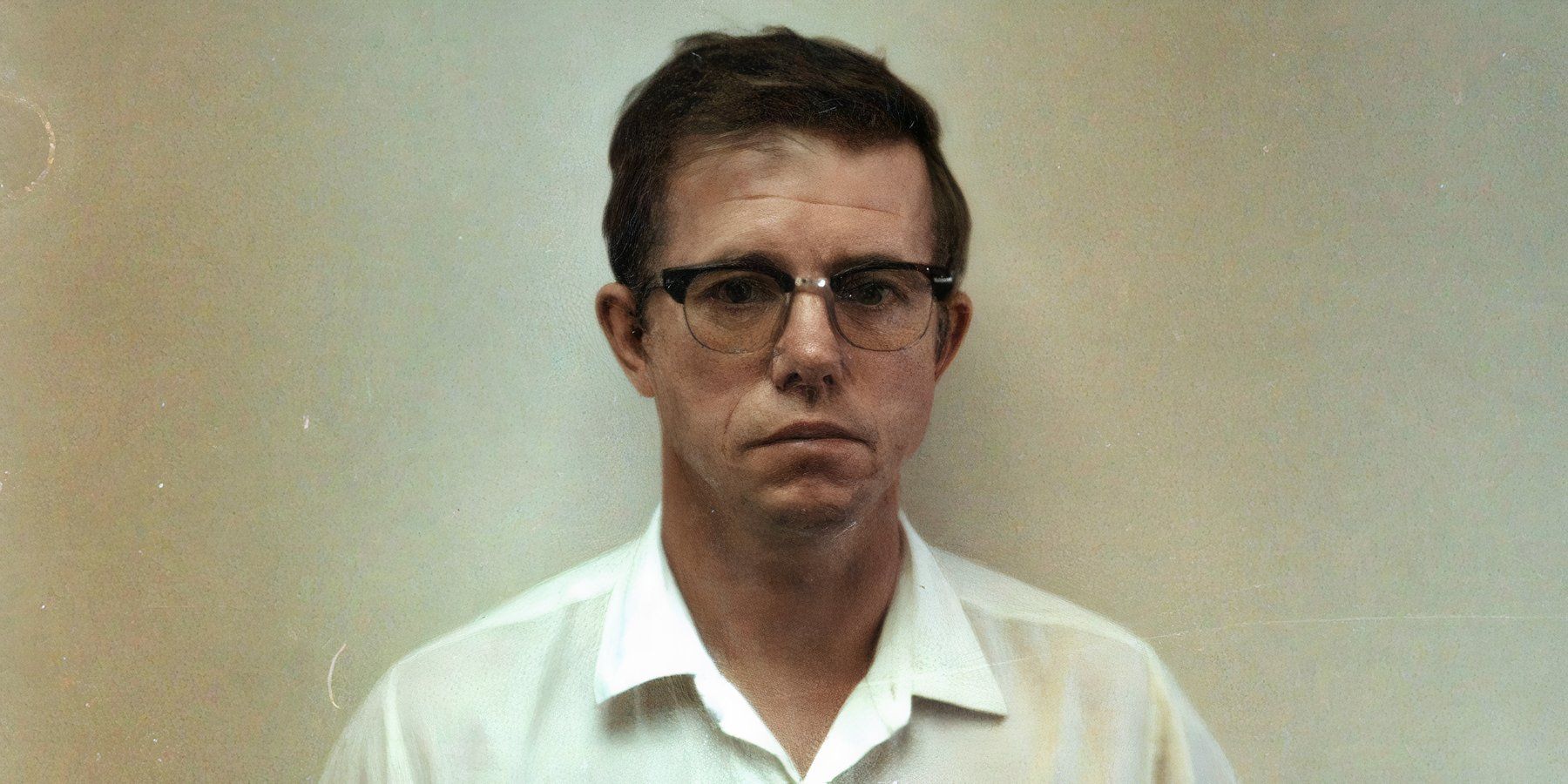
The events of Mindhunter begin in the late 1970s, so it makes sense for the series to focus on serial killers who had already been caught when the story takes place. It also makes sense, however, as the timeline progresses (or would have if the show had received more seasons), that serial killers who operated during the time of Mindhunter’s early years, but were caught later, would also appear.
That’s the case with Robert Hansen who was caught in 1983. Hansen operated in Alaska. He would kidnap women and release them into the wilderness, hunting them down. That’s a very different way of operating than the serial killers on which Mindhunter focused during the first two seasons. When one of Hansen’s victims escaped before he could hunt her down, she was able to tell authorities about him.
Police had already reached out to the FBI for help when bodies had been piling up, and a profile was created for them that helped link Hansen to the murders (by John Douglas, whose work inspired Mindhunter). Hansen could have been one of the ways Mindhunter could show what was learned in interviews being put to good use.

Related
30 Best Serial Killer TV Shows On Netflix, Ranked
Netflix is a source of tons of amazing true crime content, and there are some enthralling shows that focus on serial killers, both real and fictional.
Joseph James DeAngelo

Joseph James DeAngelo was not caught during the years that Mindhunter initially takes place. His crimes, however, were being investigated. In fact, several different clusters of criminal activity were investigated and thought to be perpetrated by different people, but they were all him. His known crimes began in the early 1970s, but he wasn’t caught until 2018 thanks to DNA evidence that couldn’t be properly analyzed earlier.
...his different crimes were investigated for decades...
DeAngelo AKA the Golden State Killer is known to be a burglar, rapist (in fact, his string of sexual assaults are mentioned in the show), and murderer, and his crimes show a clear escalation of violence as they occur in different time periods. While he wouldn’t have been caught while the FBI was building their initial behavioral analysis team, considering his different crimes were investigated for decades, it would be easy to see the agents discuss creating profiles with him later used as an example.
Lynette Alice “Squeaky” Fromme

Lynette Alice Fromme, nicknamed Squeaky, is not classified as a serial killer. She is, however, someone that John Douglas interviewed in real life as part of his work building the FBI’s profiling system. Fromme was connected to a very notorious group of killers - the Manson family - which is why she would be an interesting inclusion.
When Fromme dropped out of college in the 1960s, she was kicked out of the family home by her parents, and her path crossed with Charles Manson. She became the second member of his “family” very quickly, though she maintained that she was not involved in several of the crimes associated with the family. She did, however, frequently visit members of the Manson family in jail, and ended up arrested herself for the attempted assassination of Gerald Ford.
At the time of her arrest, she was completely devoted to the Manson family. She’s one of the few women that Douglas interviewed early during his extensive work with serial killers and psychologists, and though not a serial killer herself, she provides another perspective on how people interact with a cult-like leader who can inspire others to kill. Her inclusion in Mindhunter’s interview process would, likewise, have given that unique perspective.
Donald Harvey
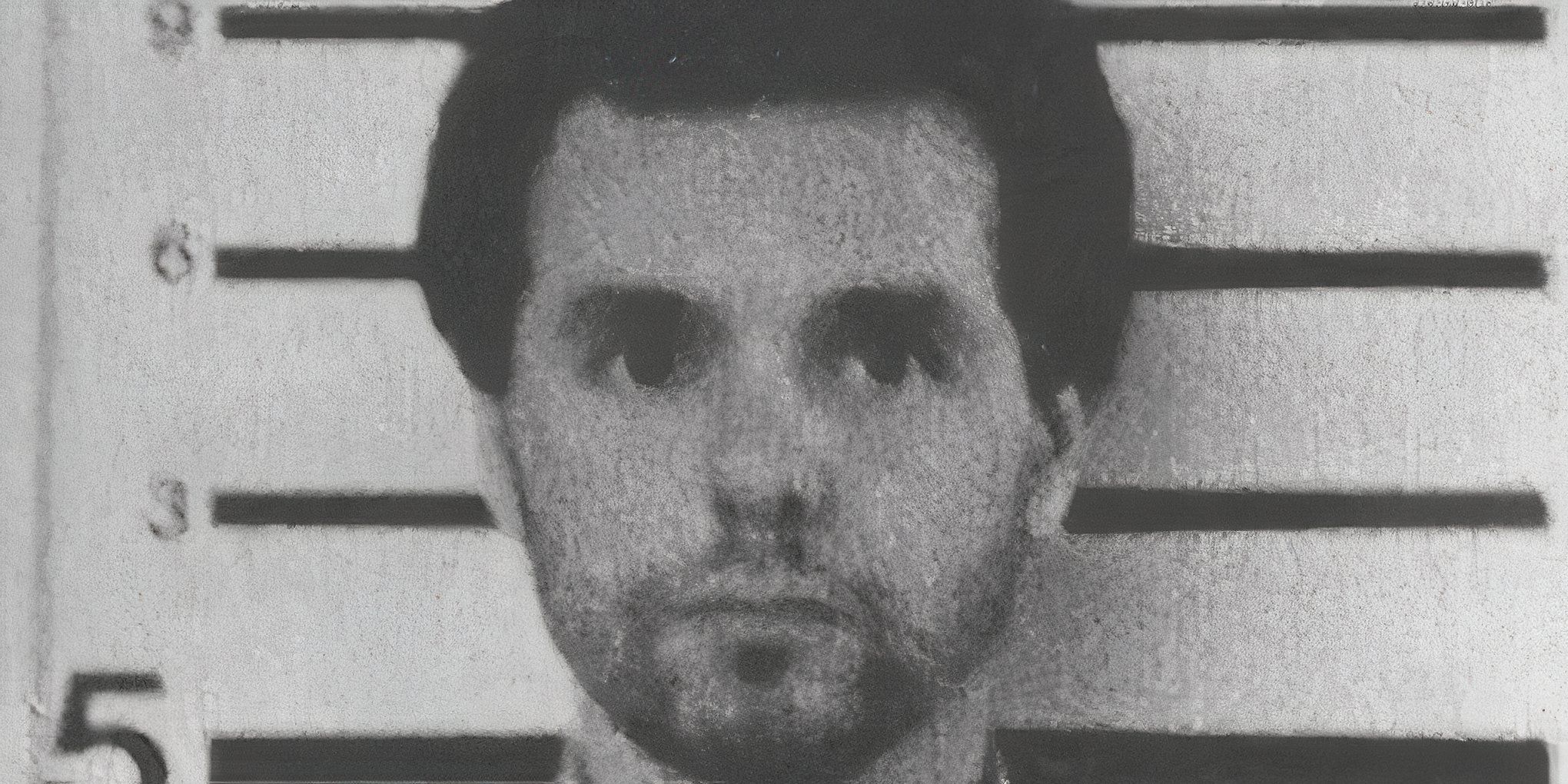
Because Mindhunter is pulled from the work of John Douglas with many of the interviews actually being based on transcripts of his own, it makes sense for the show to include those real-life killers whose cases he worked on or whom he conducted interviews with after their arrest. One of those is Donald Harvey, whose methods were very different from those of killers seen in the show already.
Harvey was active in the 1970s and ‘80s, only getting caught after cyanide was detected in the system of a recently deceased hospital patient. Working as an orderly and autopsy assistant at multiple hospitals over a 20-year span, Harvey claimed he only began killing patients to provide them with mercy. Most of the people he killed were elderly cardiac patients whose oxygen supply he damaged or whom he poisoned.
Harvey, however, did kill some people in his own life, including his lover’s father and a neighbor. He was ultimately confirmed to have killed 37 people when he was sentenced to life in prison (28 life sentences, actually), but he confessed to 50 deaths, some accidental. There are suspicions that he might have been responsible for closer to 80.
Henry Lee Lucas & Ottis Toole
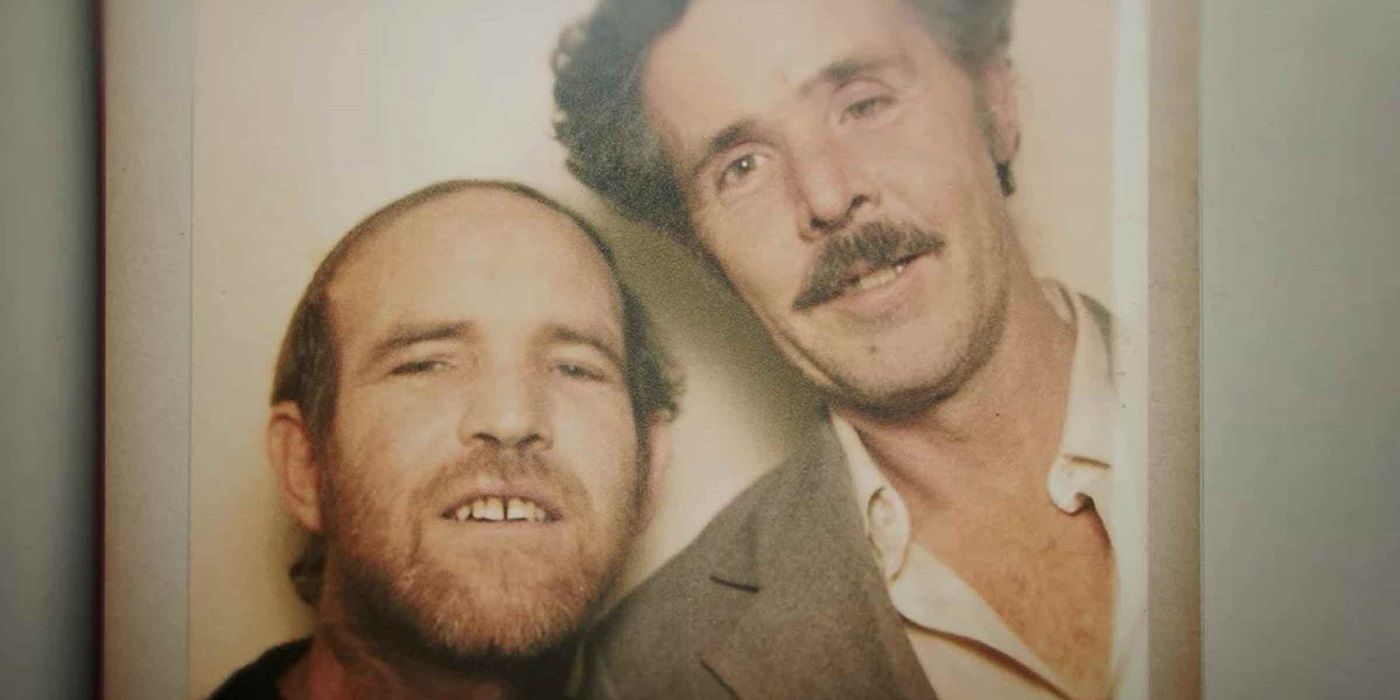
This story has already been loosely adapted into the horror classic Henry: Portrait of a Serial Killer, but it would have been fascinating to see these two murderers portrayed on Mindhunter as well. Both men confessed to an absurd number of killings that they didn't actually commit, but they did still murder many victims.
Notably, although he was never convicted of the crime, it's believed that Toole killed Adam Walsh (son of America's Most Wanted host John Walsh, who was inspired to become a victim's advocate because of Adam's murder).
Their inclusion as interview subjects would have been interesting because it would have forced Ford and Tench to separate the serial killers who simply wanted the attention from those who could actually inform how they would build criminal profiles. There are cases where known killers have confessed to additional crimes because they believe it will gain them more infamy, and potentially, more power in prison.
Richard Ramirez

Like Ted Bundy, Richard Ramirez has been the subject of several movies and documentaries already, and has inspired characters in shows like Criminal Minds and American Horror Story.Richard Ramirez was undoubtedly one of the most notorious killers of the 80s, so if Mindhunter had continued beyond season 2, he would have made a fantastic case study for Holt and Tench.
Ramirez was a murderer, sex offender, and a devoted Satan worshiper who liked to display pentacles drawn on his palm during his trial. Bizarrely, the killer dubbed "The Night Stalker" was caught in Los Angeles after, unbeknownst to him, he had been identified and had his face plastered all over every newspaper, and many bystanders began recognizing him and chasing him down.
Todd Kohlhepp

Todd Kohlhepp would have only worked on Mindhunter if the show had continued years down its existing timeline. Kohlhepp was active in the early 2000s and was arrested in 2016. However, he was also convicted of kidnapping in the ‘80s and spent 15 years in prison. If he hadn’t been in prison, it’s likely he would have been an active serial killer at that time as well.
Kohlhepp’s known victims were all personally connected to him - employees at a motorcycle shop that laughed at him and wouldn’t allow him to return a motorcycle.
John Douglas actually consulted on Kohlhepp’s case despite having retired in the 1990s. Kohlhepp’s known victims were all personally connected to him - employees at a motorcycle shop that laughed at him and wouldn’t allow him to return a motorcycle, a husband and wife hired to work on his property, and a waitress whose work he frequented. Kohlhepp has long claimed that there are more victims than the ones the authorities know about, but he’s never shared any details about who they are.
Including someone like Kohlhepp, especially if Mindhunter had gone on for more seasons, right before it ended, could have helped to show just how far profiling and behavioral analysis had come since the small team of agents started the division at the FBI.

Related
10 Darkest Mindhunter Moments
David Fincher's Mindhunter is just as dark as many of his classics like Se7en or Zodiac, but what are the darkest moments of the serial killer series?
Which Serial Killers Were Most Accurately Portrayed?
Most Of The Serial Killers Included Accurate Portrayals
One of the reasons that those with an interest in criminal psychology or true crime enjoy Mindhunter so much is because of how accurate the portrayals of the criminals in the series are compared to their real-life interviews. Casting directors clearly took pains to make sure that there was a passing resemblance and the ability to closely mimic the body language of the real people in question. Makeup and costuming made the resemblance simply uncanny for some of the actors portraying the serial killers in the series.
When it comes to the performance of the characters though, the most accurate would have to be Kemper and Manson. Though the timeline of events for their fictional counterparts might not be exactly the same to real-life, as is true for many of the interview subjects, they come across as the closest to their real-life inspirations.
Damon Herriman’s voice might not be an exact match for Charles Manson, but the actor still nailed his performance. He doesn’t have the benefit of appearing in much of the show and getting to really delve into the character of Manson, but Herriman does have the benefit of playing the character more than once. He also played Charlie in Quentin Tarantino’s Once Upon A Time In Hollywood, so it’s clear that he knew to bring both charm and a disarming menacing feeling to the role.
Kemper is the serial killer the show spends the most time with so it makes sense that the most care would have gone into his portrayal. Lines, body language, and vocal inflections that exist in his real interviews are portrayed nearly exactly in the show. Compared to other people who only appear in a single episode, it makes sense that everyone involved would want Kemper to be as accurate as possible for Mindhunter.

From executive producers David Fincher and Charlize Theron comes Mindhunter, a series that chronicles the founding of the FBI's Behavioral Science Unit used to track and apprehend serial killers. Mindhunter follows Agent Holden Ford (Jonathan Groff) and Bill Tench (Holt McCallany) as they work to establish a framework for understanding the minds of some of America's most dangerous serial killers. Mindhunter adapts a number of true crime stories, including the BTK murders and the notorious Co-Ed Killer, Edmund Kemper.
Release Date October 13, 2017
Seasons 2
Showrunner Joe Penhall




:quality(85):upscale()/2024/10/29/625/n/1922564/ec222ac66720ea653c5af3.84880814_.jpg)
:quality(85):upscale()/2024/10/25/846/n/49351082/bfc0fdb3671bef086c3703.42134063_.jpg)
:quality(85):upscale()/2021/07/06/971/n/1922153/7d765d9b60e4d6de38e888.19462749_.png)
:quality(85):upscale()/2024/10/29/957/n/1922441/c62aba6367215ab0493352.74567072_.jpg)

 English (US) ·
English (US) ·